
Overcoming Anxiety
and Depression on
the Autism Spectrum
by the same author
A Best Practice Guide to Assessment and Intervention for Autism and Asperger Syndrome in Schools
Lee A. Wilkinson
Foreword by Diane Twachtman-Cullen
ISBN 978 1 84905 811 7
eISBN 978 0 85700 375 1
of related interest
Asperger Syndrome and Anxiety
A Guide to Successful Stress Management
Nick Dubin
Foreword by Valerie Gaus
ISBN 978 1 84310 895 5
eISBN 978 1 84642 922 4
The Autism Spectrum and Depression
Nick Dubin
ISBN 978 1 84905 814 8
eISBN 978 0 85700 242 6
Very Late Diagnosis of Asperger Syndrome (Autism Spectrum Disorder)
How Seeking a Diagnosis in Adulthood Can Change Your Life
Philip Wylie
ISBN 978 1 84905 433 1
eISBN 978 0 85700 778 0
Mindful Living with Aspergers Syndrome
Everyday Mindfulness Practices to Help You Tune in to the Present Moment
Chris Mitchell
ISBN 978 1 84905 434 8
eISBN 978 0 85700 867 1
Overcoming Anxiety and Depression on the Autism Spectrum
A Self-Help Guide Using CBT
Lee A. Wilkinson, PhD

Jessica Kingsley Publishers
London and Philadelphia
The Adult Systematizing Quotient (SQ) Test on pages 117123 are reproduced with kind permission of the Journal of Autism and Developmental Disorders.
First published in 2015
by Jessica Kingsley Publishers
73 Collier Street
London N1 9BE, UK
and
400 Market Street, Suite 400
Philadelphia, PA 19106, USA
www.jkp.com
Copyright Lee A. Wilkinson 2015
All rights reserved. No part of this publication may be reproduced in any material form (including photocopying or storing it in any medium by electronic means and whether or not transiently or incidentally to some other use of this publication) without the written permission of the copyright owner except in accordance with the provisions of the Copyright, Designs and Patents Act 1988 or under the terms of a licence issued by the Copyright Licensing Agency Ltd, Saffron House, 610 Kirby Street, London EC1N 8TS. Applications for the copyright owners written permission to reproduce any part of this publication should be addressed to the publisher.
All pages marked  can be downloaded at www.jkp.com/overcoming-anxiety-anddepression-on-the-autism-spectrum.html for personal use with this program, but may not be reproduced for any other purposes without the permission of the publisher.
can be downloaded at www.jkp.com/overcoming-anxiety-anddepression-on-the-autism-spectrum.html for personal use with this program, but may not be reproduced for any other purposes without the permission of the publisher.
Warning: The doing of an unauthorised act in relation to a copyright work may result in both a civil claim for damages and criminal prosecution.
Library of Congress Cataloging in Publication Data
Wilkinson, Lee A. (Lee Anthony)
Overcoming anxiety and depression on the autism spectrum : a self-help guide using CBT / Lee A.
Wilkinson.
pages cm
Includes bibliographical references.
ISBN 978-1-84905-927-5 (alk. paper)
1. Autism spectrum disorders--Patients--Rehabilitation. 2. Autism spectrum disorders--Patients-
Mental health. 3. Cognitive therapy. 4. Anxiety--Treatment. 5. Depression, Mental--Treatment. 6. Self
help techniques. I. Title.
RC553.A88W53 2015
616.85882--dc23
2014026828
British Library Cataloguing in Publication Data
A CIP catalogue record for this book is available from the British Library
ISBN 978 1 84905 927 5
eISBN 978 0 85700 710 0
To the memory of my parents,
Lee C. and Anna M. Wilkinson
ACKNOWLEDGMENTS
This book represents a combination of many years of practice as a psychologist and autism professional. I would like to take this opportunity to extend my gratitude to the children and youth with whom I have worked over the years, their families and others in the autism community. Without you, this book would not have been written. I also extend my appreciation to the editorial staff at Jessica Kingsley Publishers. Special thanks to Rachel Menzies, for her assistance in bringing the project forward, and to Kate Mason, for her skillful work in editing the manuscript. As always, I am most grateful to my spouse, Amy, for her patience, support, and encouragement during the writing process.
CONTENTS
Record Form
CHAPTER
INTRODUCTION
Adults on the Autism Spectrum
The dramatic increase in the prevalence of autism spectrum conditions among children and adolescents and the correspondingly large number of youth transitioning into adulthood has created an urgent need to address the problems faced by many adults on the autism spectrum. There is no adult-onset autism spectrum condition. Symptoms have generally been present in childhood and extend into adulthood. Although adolescence and early adulthood may bring about some symptom reduction and improved functioning, we now know that autism is a continuous and lifelong condition and that individuals seldom move off the autism spectrum (Holmboe et al. , 2014). Similarly, autistic traits have been found to be highly stable when measured in the general (typical) population. It seems quite clear that rather than outgrowing their symptoms, children with autism spectrum conditions become adults with autism spectrum conditions (Seltzer et al. , 2004; Shea and Mesibov, 2005; Wilkinson, 2008). Moreover, there is a large and heterogeneous group of adults whose autistic traits were not identified in childhood and therefore may not have received the appropriate interventions and supports. As a result, there are a significant number of adults who are now seeking help to deal with feelings of social isolation, interpersonal difficulties, anxiety, depressed mood, and coping problems often associated with being situated on the autism spectrum. It is only recently that mental health professionals have begun to appreciate the complex challenges faced by a lost generation of adults who are now an underserved population (Wilkinson, 2007). The focus of intervention must shift from remediating the core symptoms of childhood to promoting adaptive behaviors that can facilitate quality of life and psychological well-being in adulthood (Orsmond et al. , 2013).
While there is no shortage of books describing the controversies and challenges related to the diagnosis and treatment of autism spectrum conditions, there is a need for a practical resource for adults on the spectrum that promotes self-understanding and directly teaches effective ways of coping with their emotional challenges. This self-help guide provides a different way of looking at adult autism spectrum conditions and addresses the discomfort that many individuals experience deviating from what is generally referred to as neurotypicality. It provides a rational approach to managing anxiety and depression and is intended to help the individual find their own space and feel comfortable with themselves. It does not focus on a specific or single autism-related condition (e.g. Asperger syndrome), nor is it intended to confirm or sanction a diagnosis or help establish a self-identity. The primary objective of this book is to provide a self-help resource that will lead to greater self-understanding, self-advocacy, and better decision-making in life span activities such as employment and interpersonal relationships for adults on the autism spectrum. It is written from a positive and strength-based perspective. The intended audience is individuals in the early and middle years of adulthood, with and without a formal diagnosis, who share features associated with autism spectrum conditions. This includes adults who may have achieved an optimal outcome and no longer meet the criteria for a diagnosis, but who continue to experience subtle deficits in communication and social adaptive behavior. It is also appropriate for adults who recognize their autistic traits, even though they may not have experienced major social difficulties and clinical impairment, but who want to improve their emotional well-being.
Next page
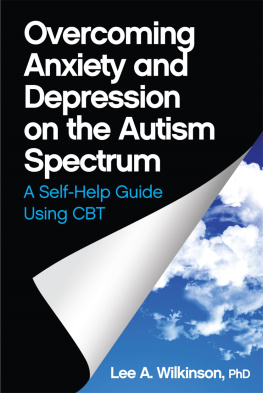
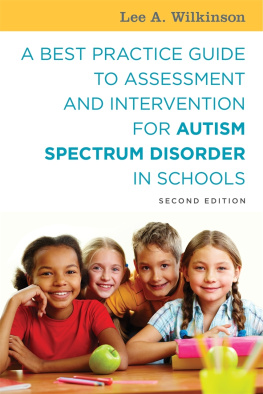
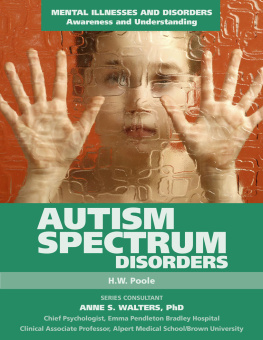


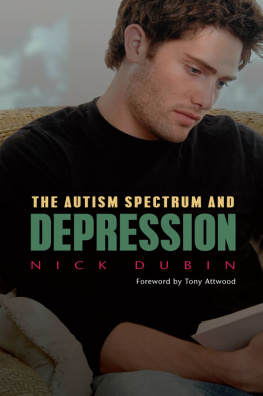
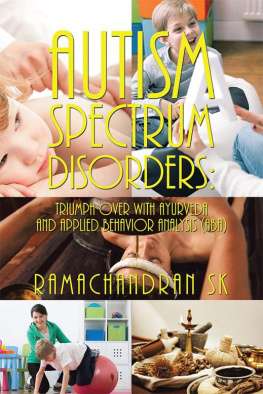
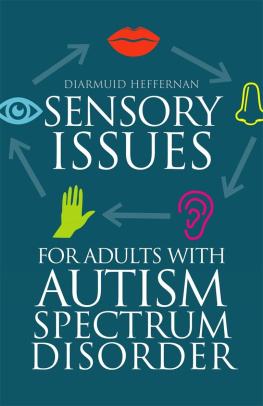
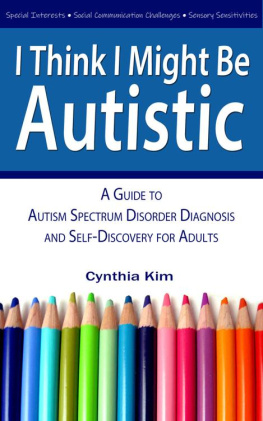
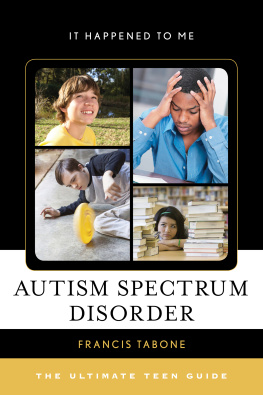
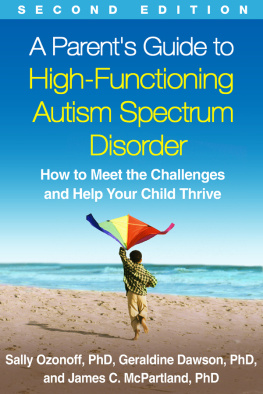


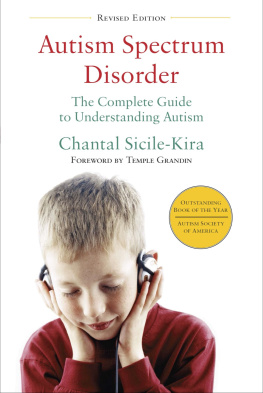


 can be downloaded at www.jkp.com/overcoming-anxiety-anddepression-on-the-autism-spectrum.html for personal use with this program, but may not be reproduced for any other purposes without the permission of the publisher.
can be downloaded at www.jkp.com/overcoming-anxiety-anddepression-on-the-autism-spectrum.html for personal use with this program, but may not be reproduced for any other purposes without the permission of the publisher.